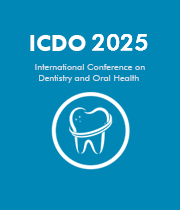Title: Influence of aging on the marginal and internal fit of milled and 3d printed interim crowns
Abstract:
Background: In the realm of prosthetic dentistry, temporary dental crowns are used following abutment tooth preparation. They engage in multiple tasks, which comprises of protecting the pulpal tissue of the tooth, preventing microbial invasion and dentinal hypersensitivity, along with providing the patient temporary aesthetic appeal. The main challenge associated with temporary crowns are ensuring that the internal fittings are constructed precisely with good marginal integrity. Patients may experience dissatisfaction with the prosthesis' reliability and fit as a result of poorly designed crowns after placement inside the oral cavity.
Objective: The aim of the present in vitro study was to compare the internal fit and marginal accuracy of three interim crowns fabricated with conventional, milled and 3D printed crowns techniques with respect to aging protocols [pre-cementation, post-cementation and post-aging].
Methods: A total of 60 first molar teeth were designed via milled, 3D printing and conventional method [n=20 each], respectively. The three different stages of the interim crown comprising pre-cementation, post-cementation and post-aging were assessed. The prepared crowns were scanned using micro-CT to determine the interior fit and marginal accuracy after being embedded in self-curing acrylic resin. To comprehend the gaps, each category of fabricated crown was measured further in two directions [ i.e., buccal lingual and mesio-distal] and at several positions [marginal, cervical, axial, axio-occlusal, and occlusal]. The collected data were analyzed for statistical analysis by using ANOVA at α = 0.05.
Results: The conventional interim crown fabrication technique presented with major discrepancies of gaps in all directions of crown when measured at different stages [pre-cementation stage, post cementation and post-aging]. Among the various sites of directions, occlusal aspect of conventional crown showed the highest mean value [343.50?] of gaps when measured in mesio-distal direction of after-aging stage, whereas, pre-cementation and post-cementation stage showed highest occlusal gaps in buccal-lingual direction with mean value [285.25-337.05 ?] respectively. The least gaps were found in axial direction among all evaluated techniques.



